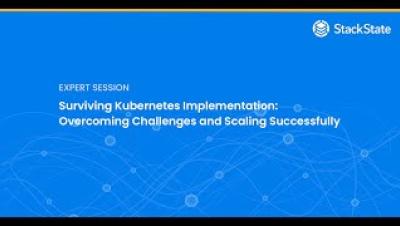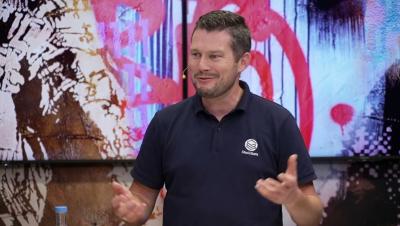Operations | Monitoring | ITSM | DevOps | Cloud
StackState
Kubernetes Unpacked: Driving Enterprise Success with Cloud-Native
The Power of Data Correlation: Troubleshooting Made Easy
As software engineers, we all know that troubleshooting often involves sifting through heaps of data points — scanning metrics, reading logs, checking resource status and analyzing events. We manually connect the dots, and if we're experienced enough, we might spot an issue that's about to become a problem. At StackState, we've faced these same challenges.
The Power of Data Correlation
Configuration Drift: Understanding, Avoiding, Managing and Resolving in Kubernetes
If you work with Kubernetes, you know that any number of issues can pose a serious threat to the stability and security of your deployments. One that's subtly damaging is configuration drift, which occurs when the actual state of how your system is set up — its configuration — strays from the way you defined. Configuration drift in Kubernetes can happen when people make changes manually, systems aren't synchronized properly or monitoring falls short.
Application Dependency Maps: The Secret Weapon for Troubleshooting Kubernetes
Picture this: You're knee-deep in the intricacies of a complex Kubernetes deployment, dealing with a web of services and resources that seem like a tangled ball of string. Visualization feels like an impossible dream, and understanding the interactions between resources? Well, that's another story. Meanwhile, your inbox is overflowing with alert emails, your Slack is buzzing with queries from the business side, and all you really want to do is figure out where the glitch is. Stressful? You bet!
Unlocking IT: Considerations for a Powerful Observability Strategy
In today's cloud-native landscapes, observability is more than a buzzword; it's a critical element for software development teams looking to master the complexities of modern environments like Kubernetes. There’s a multi-faceted nature to observability with all its various levels and dimensions — from basic metrics to comprehensive business insights. It’s complex and can continue indefinitely…if you let it.
Platform Engineers: Applied Best Practices Are Baked-in to Kubernetes Monitoring
Operating Kubernetes reliably and efficiently involves adhering to a set of best practices. These practices help ensure the stability, scalability and maintainability of your Kubernetes clusters and their applications. It's crucial for platform teams (responsible for the infrastructure) and software development teams (responsible for deploying applications) to work together in applying these practices.
A Practical Developer's Guide on How to Troubleshoot HTTP 5XX errors
Imagine the following situation: You are on call, and your monitoring dashboard has flickering red lights due to an increased number of 5xx HTTP responses from one or more of your Kubernetes services. Now it is time to start to troubleshoot 500 Errors. Instead of panicking, you can use this blog as a guide.
Troubleshooting and Fixing Kubernetes CrashLoopBackOff
In this post, we'll dive into what CrashLoopBackOff actually is and explore the quickest way to fix it. Fasten your seat belts and get ready to ride. Everyone working with Kubernetes will sooner or later see the infamous CrashLoopBackOff in their clusters. No matter how basic or advanced your deployments are and whether you have a tiny dev cluster or an enterprise multi-cloud cluster, it will happen anyway. So, let’s dive into what CrashLoopBackOff actually is and the quickest way to fix it.






